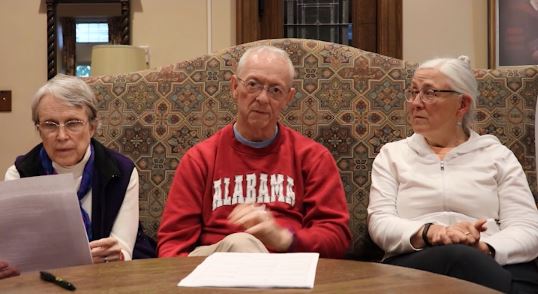Stories of More Light Churches

In 1978, several churches took issue to a ruling by the United Presbyterian Church in the U.S.A. General Assembly. The assembly had ruled that although LGBTQIA+ people could join churches, they could not serve in official leadership roles. The churches that heard this ruling and were determined to stand against it began to declare themselves “More Light” churches. The name More Light came from a quote in John Robinson’s Farewell Address that said that God had “yet more light and truth to break forth” from the word.
West Park Presbyterian Church in Manhattan was the first congregation to officially declare itself a More Light church. In 1978, Rev. Robert Davidson preached from the West Park pulpit, “This local congregation will not select one particular element from a person’s total humanity as a basis for denying full participation and service in the body of Christ.” [1]
By saying they were a More Light church, congregations were publicly committing to welcoming LGBTQIA+ people into the full life of the community. Some churches had already welcomed LGBTQIA+ members and staff for years, such as West Hollywood Presbyterian Church. West Hollywood initiated the Lazarus Project in 1977, which was a ministry that worked for reconciliation between the church and the local LGBTQIA+ community. A full report from the Lazarus Project is available here.
The number of More Light churches grew throughout the next decade. Many of these churches collaborated with one another or with national advocacy groups, such as Presbyterians for Lesbian and Gay Concerns (PLGC), to work for institutional change within the PC(USA). In 1992, More Light churches formally joined together to create the More Light Churches Network. The network merged with PLGC in 1998 and became a single organization called More Light Presbyterians. More Light Presbyterians is still at work today with over 300 member churches.
PHS currently holds some records on how congregations decided to become official More Light churches. This includes:
- Noble Road Presbyterian Church (Clevaland, OH) More Light statement drafts, and discussion notes/questionaries on the process from the Tricia Dykers Koenig Papers
- Westminster Presbyterian Church (Washington, DC) More Light Ministry materials donated by Jeanne MacKenzie
- Downtown United Presbyterian Church (Rochester, NY) More Light process materials donated by Gail Anderson Ricciuti
- Lincoln Park Presbyterian Church (Chicago, IL) More Light materials from the David Sindt Papers
Also available in our digital archive is an oral history with members of the Third Presbyterian Church (Rochester NY) More Light Committee.
PHS is actively collecting stories of how congregations declared that they were More Light churches or have advocated in other ways for an inclusive denomination. We are also seeking to collect stories of Presbyterian churches celebrating Pride Month (either in 2021 or years past), including worship services or sermons that focus on Pride.
Please contact PHS to hear more about how you can become involved in our Pam Byers Memorial Collection.
[1] Glaser, Chris, "Writings of Our Movement in the Presbyterian Church: Part Two - The Early Middly Years 1978-1979," Illuminations, 1997.
























